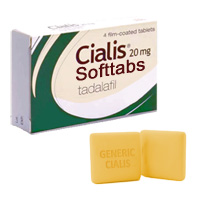How Does a Celiac Plexus Block Relieve Abdominal Pain?

Pain is a complex thing. It is as complex as the physiological and biological components involved in the pain experience. Take the celiac plexus. It is one of the most important autonomic nervous system structures in the human a body. Partially blocking its function can significantly reduce abdominal pain.
A procedure known as the celiac plexus block can be utilized to offer patients pain relief from conditions like pancreatitis and pancreatic cancer. Really, a any condition manifesting itself in abdominal pain is a good candidate for the procedure. It is known to offer excellent pain relief even when more traditional treatments fail.
More About the Celiac Plexus
The celiac plexus is also known as the solar plexus. It is an abdominal nervous system structure made up of a complex network of nerve fibers and interconnected ganglia. Most of the nerves in the structure surround the aorta and extend outward from there.
Its main function is to innervate both sympathetic and parasympathetic influences within the abdominal area. This includes the stomach, liver, gallbladder, small intestine, pancreas, spleen, and kidneys. It transmits signals from the associated tissues to the brain.
Through this function we understand that the celiac plexus transmits pain signals. So if there is something going on in the abdomen, like pancreatitis, it is the celiac plexus nerve network that alerts the brain. Its innervation is what causes the brain to perceive pain.
The celiac plexus block is designed mainly to interrupt the structure’s ability to send pain signals. At the same time, a clinician does not want to interrupt the structure’s other functions. This would include digestion. Inhibiting digestion in order to reduce pain would not be a very good tradeoff.
More About the Therapy
As a therapy for managing abdominal pain, the celiac plexus block relies on anesthetic to do the heavy lifting. In some cases, a doctor might recommend injecting a secondary medication that purposely damages the nerves to permanently inhibit signal transfer to the brain. In either case, a doctor is obliged to explain the options so that a patient can make an informed choice.
To begin the therapy, the skin immediately surrounding the injection site is cleaned and disinfected. Next, a local anesthetic is applied to numb the skin. This is followed by the injection of a dye that will aid in proper needle placement with the help of fluoroscopy. The doctor will use a fluoroscope to make sure the needle containing the medicine reaches the correct location.
Once correctly located, the needle delivers the desired medication. It is then slowly removed, and a the injection site bandaged. Most patients need about 30 minutes of recovery time due to numbness and tingling in the abdomen and leg. Patients are observed by staff members a during the recovery period.
Pain Relief and Complications
The amount of relief a patient experiences varies from one to the next. The experts at Lone Star Pain Medicine say that some patients experience relief that can last several months. For other patients, the celiac plexus block only works for a few weeks. There is really no a way for a pain medicine doctor to know ahead of time.
In terms of complications, patients have little to worry about. Temporary bruising and soreness at the injection site are normal as are short bouts of diarrhea. Numbness and tingling tend to subside fairly quickly. That’s about it. Of course, infection is always a risk following any kind of injection.
Now you know about the celiac plexus block and how it is offers pain relief. You might consider it if you experience regular abdominal pain.



